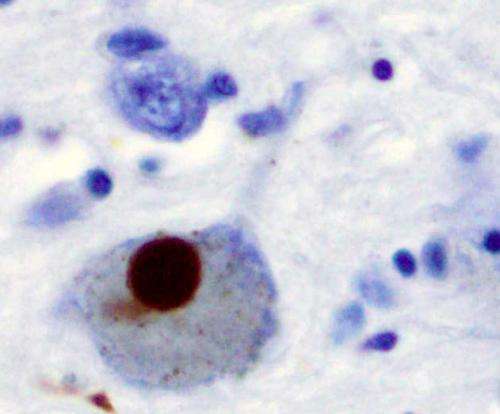normal dosage of testosterone injections

Scientists at the Francis Crick Institute, UCL and the University of Edinburgh have uncovered how a build-up of harmful protein starts to happen within neurons in Parkinson’s disease, ultimately causing nerve cell death. By looking at how, where and why this build-up happens, the work provides unique insight into a key biological process driving Parkinson’s.
Parkinson’s is a progressive neurodegenerative disease that causes tremors, lamictal green when dissolved slowing of movements, stiffness and can progress to cause severe cognitive problems. It affects around 145,000 people in the UK, with this number expected to increase as more people live longer.
Parkinson’s is caused by a loss of neurons in specific parts of the brain. In affected nerve cells, a protein called alpha-synuclein misfolds and clumps together into harmful structures. The mechanisms behind this are not yet fully understood.
In their paper, published in Nature Neuroscience today, the researchers developed a new sensitive approach to study what happens to alpha-synuclein during the earliest stages of disease.
Using neurons derived from cells donated by people with inherited forms of Parkinson’s, as well as from healthy individuals, the team were able to visualize where, why, and how this protein starts to misfold and clump inside nerve cells.
The interdisciplinary team of neurologists, chemists and structural biologists found that alpha-synuclein contacts the membranes, or linings, of structures within nerve cells. When it contacts the membrane of the mitochondria, part of the cell responsible for generating energy, this triggers the misfolding and clumping of alpha-synuclein.
The clumps of protein then collect heavily on the surface of the mitochondria damaging its surface, causing holes to form on the membrane and interfering with the mitochondria’s ability to create energy. Eventually, this leads to the mitochondria releasing signals that cause the neuron to die.
While there are various sub-types of Parkinson’s, this protein is known to misfold and clump together in all types. When neurons are healthy, the misfolded proteins are constantly cleared and removed from the cell. It is thought that, as people age, the process of removing this harmful protein can slow down.
Sonia Gandhi, lead author and Senior Group Leader at the Crick, and Professor of Neurology at UCL Queen Square Institute of Neurology, says: “There has been huge progress in understanding protein misfolding, but the major challenge has been to study the first stages of this process inside the human cell.
“Our study provides insights into what is happening in the earliest stages when proteins start to misfold, and how they affect the health of the cell. This provides an important piece of the puzzle in understanding the biological mechanisms driving Parkinson’s.”
Andrey Abramov, co-lead author and Professor at UCL Queen Square Institute of Neurology adds: “We have known for some time that the mitochondria are abnormal in Parkinson’s, but it has not been clear why. This work connects where proteins misfold with how they induce mitochondrial damage, and cause cell death.”
Minee Choi, first author and senior post-doctoral research fellow at the Crick, says: “Our study used neurons derived from cells taken from people with Parkinson’s, meaning the neurons we worked with had the same genetic make-up and characteristics as diseased cells in patients. This means we can be more confident that our work reflects what is happening in neurons in the body.”
Matthew Horrocks, co-lead author and senior lecturer in Biophysical Chemistry at the University of Edinburgh, adds: “It’s fantastic that we have been able to use a range of state-of-the-art biophysical techniques to study how proteins misfold and cause damage in extremely complex biological samples. Our findings shed light on the very earliest events in Parkinson’s, processes that are only visible using extremely sensitive detection approaches.”
The innovative new method the researchers developed could also be used to study how proteins misfold in other neurodegenerative diseases and types of cells, including glial cells which are involved in neurodegenerative diseases.
Source: Read Full Article
